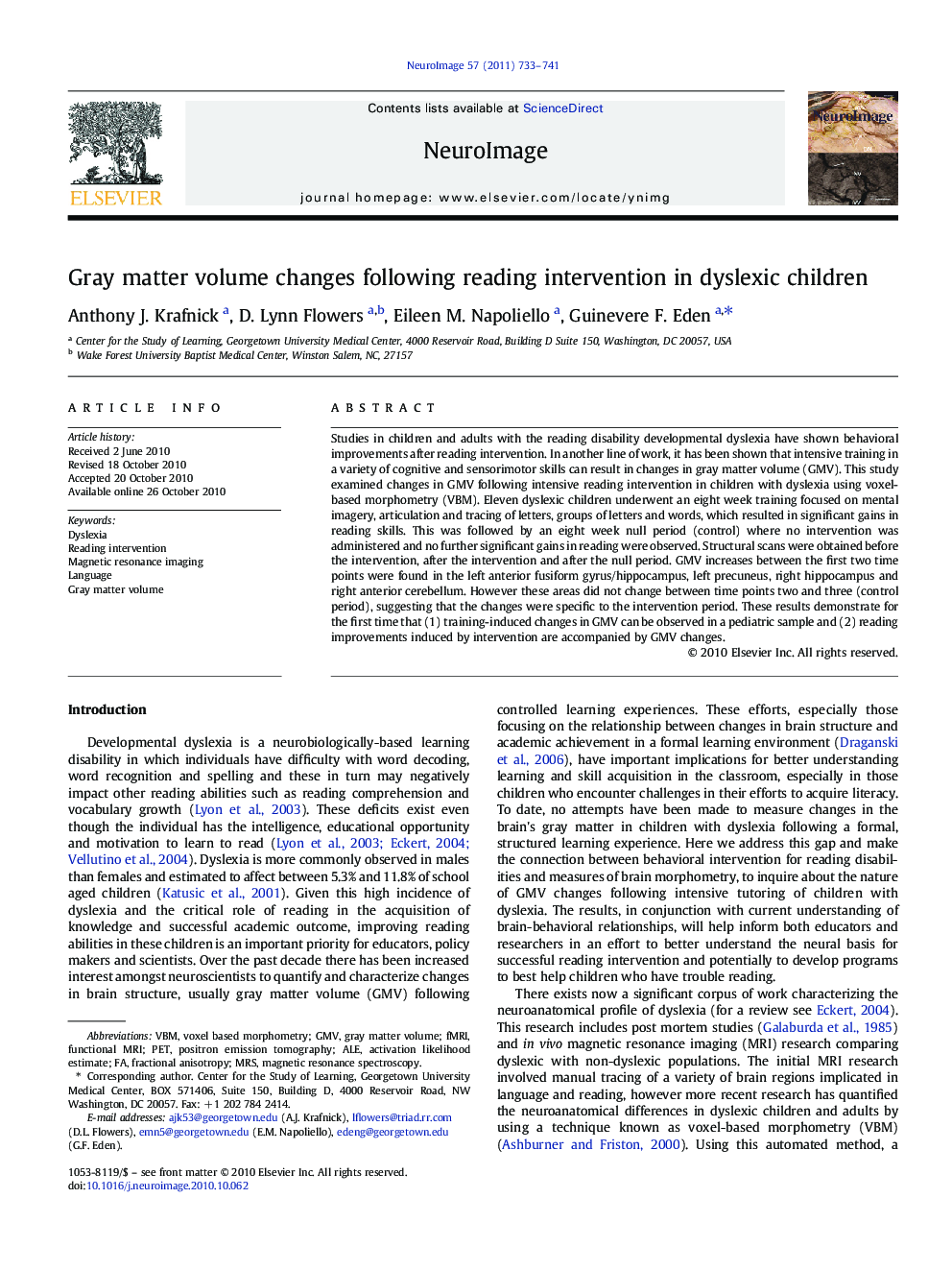| Article ID | Journal | Published Year | Pages | File Type |
|---|---|---|---|---|
| 6034666 | NeuroImage | 2011 | 9 Pages |
Studies in children and adults with the reading disability developmental dyslexia have shown behavioral improvements after reading intervention. In another line of work, it has been shown that intensive training in a variety of cognitive and sensorimotor skills can result in changes in gray matter volume (GMV). This study examined changes in GMV following intensive reading intervention in children with dyslexia using voxel-based morphometry (VBM). Eleven dyslexic children underwent an eight week training focused on mental imagery, articulation and tracing of letters, groups of letters and words, which resulted in significant gains in reading skills. This was followed by an eight week null period (control) where no intervention was administered and no further significant gains in reading were observed. Structural scans were obtained before the intervention, after the intervention and after the null period. GMV increases between the first two time points were found in the left anterior fusiform gyrus/hippocampus, left precuneus, right hippocampus and right anterior cerebellum. However these areas did not change between time points two and three (control period), suggesting that the changes were specific to the intervention period. These results demonstrate for the first time that (1) training-induced changes in GMV can be observed in a pediatric sample and (2) reading improvements induced by intervention are accompanied by GMV changes.
Research Highlights⺠Subjects showed increases on reading scores as well as increases in GMV. ⺠The increases in GMV shown are specific to the period of intervention. ⺠TFT with ELP Cu has better film characteristics than TFT with SP Cu. ⺠Behavior and structural changes maintain after the intervention stops. ⺠GMV increases correlate with improved behavior scores
